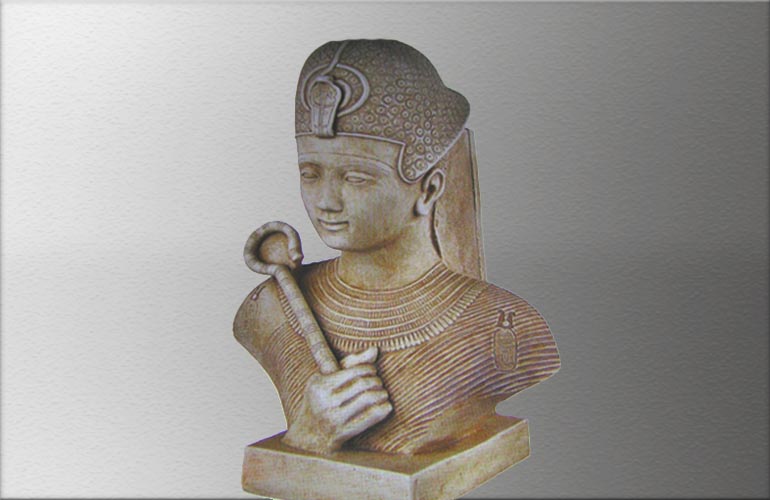Who is King Narmer, Menes?
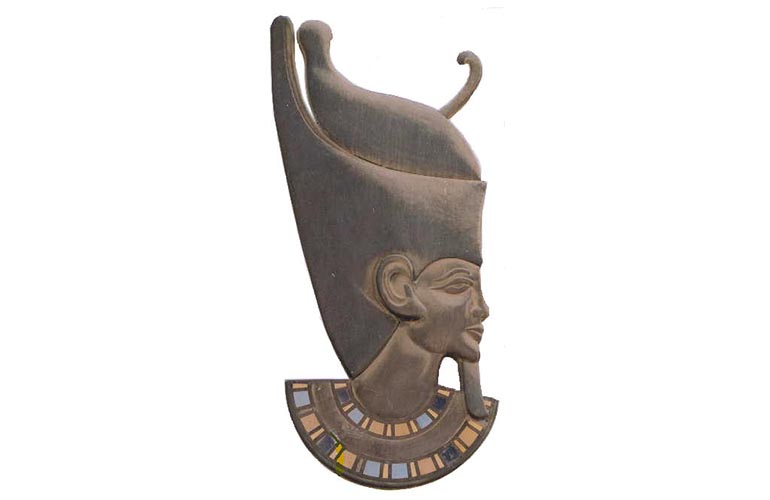
Narmer (c. 3150 – 2613 BCE)He came into power after King Scorpion, The first king of a united Egypt after he conquered the north (Lower) Egypt, Narmer from southern (Upper) Egypt is portrayed as victorious on the famous Narmer Palette in the Egyptian Museum and the founder of the first dynasty of the old kingdom in ancient Egyptian time King Narmer built a new capital on the dividing line between Lower and Upper Egypt. He called his capital city Memphis and he creates the double crown white crown and red crown.
In the opinion of many Egyptologists, the long history of unified ancient Egypt could have begun with the reign of King Narmer, the possible founder of the First Dynasty, who would rule the territory at the end of the fourth millennium BC, approximately between 3185 and 3125 BC. In any case, both the chronology and the figure of Narmer himself is disputed and is confused with that of other rulers who preceded him, such as the famous Scorpion King, or who succeeded him, as is the case of King Aha. Perhaps some explanation can throw us one of the oldest works of art in the Egyptian world, the Narmer palette, deposited in the Egyptian Museum in Cairo.
Palette of King Narmer
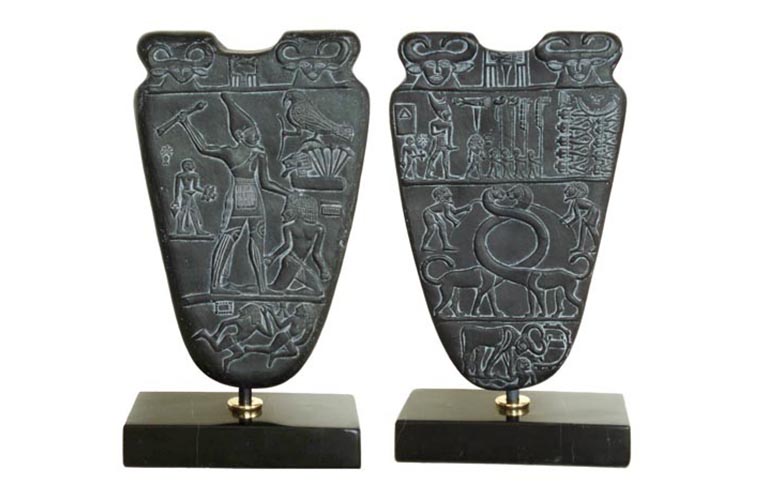
The palette of king Narmer is decorated with scenes sculpted in relief on each of its two faces, in the center of the main face, a circular hole shows the exact place where the painting was prepared, the circular shape is given by the intertwining of two fantastic felines facing each other, each held by a human figure. The lower scene represents a bull, which tramples on a man who has fallen to the ground and also gores a walled enclosure from which some bricks have fallen. It symbolizes the victory of the sovereign over men and fortifications, the king is the bull that together with the lion was considered the most fearsome animals of the country.
In the upper scene, the king wearing the red crown of Lower Egypt, preceded by a scribe and followed by a servant carrying the royal sandals in his hand, walks behind four divine banners carried by characters and heads towards a double row of decapitated men, whose heads have been ritually placed between their legs. At the top of the palette, between two heads of the goddess Hathor, appears the name of the king, written as the name of the god Horus that identifies each sovereign, with the successive incarnation of the dynastic god Horus, in turn between Hathor that is the one who protects Horus, therefore, protects the king.
On the other side of the palette, appears at the top Hathor framing the name of the king, in the central band appears the king touched with the white crown of Upper Egypt, carries a mace in his hand and with the other takes the hair of an enemy who is on the ground to hit him. After the king appears again the servant with his sandals, above to the right appears a representation of the god Horus in the form of a hawk that takes the subject of a rope to a defeated prisoner.
In the lower band, there are two fallen men, who by the contortion of their bodies seem to be at death’s door.
In this palette, we can appreciate the Egyptian system of representation, with the face and legs in profile and the torso in front.
This is a real propaganda message, with different registers and different scales to make clear the importance of the characters, of great coherence and incredible beauty.
In the two faces of the palette appears the king as the holder of power, he is the unifier of Egypt, the defender, and guardian of the two lands against their aggressors. Here it is clear that the Pharaoh is the only person who holds the power, the guardian of the harmony and prosperity of the two lands. It is the recognition of Narmer or Menes as the first pharaoh of the first dynasty.
Palette of King Narmer facts
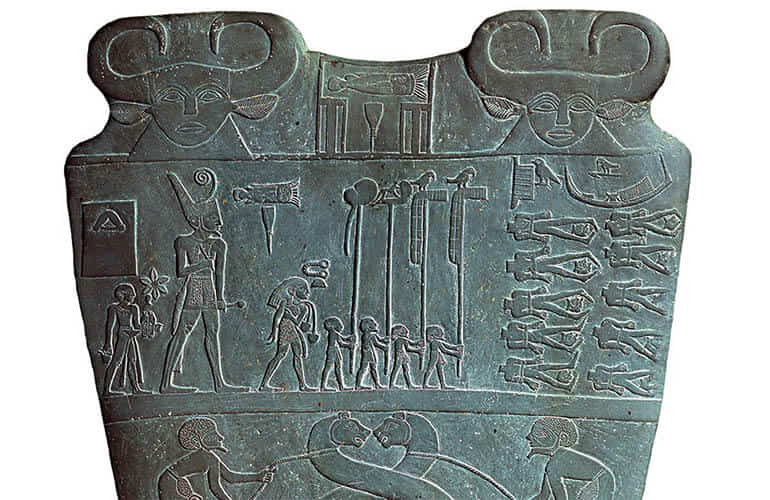
The Narmer Palette was discovered in 1897-1898 CE by the British archaeologists Quibell and Green in the Temple of Horus In central cabinet No 8, the double-sided Narmer Palette is one of the museum’s most significant artifacts, although you’d never know it from the way it’s presented. Dating from around 3100 BC it depicts Pharaoh Narmer (also known as Menes) wearing the crown of Upper Egypt on one side of the palette, and the crown of Lower Egypt on the other side, representing the first uniting of Upper and Lower Egypt under one ruler. This is the event Egyptologists take as the start of ancient Egyptian civilization. Here begin years of Pharaonic history, encompassing 170 or more rulers presiding over 30 dynasties, during which time almost every exhibit in this building was fashioned. The Narmer Palette is the keystone of the Egyptian Museum. over 3000.
The most important work of the Mac Namar:
King Narmer united the two countries.
What did King Menes do for Egyp?
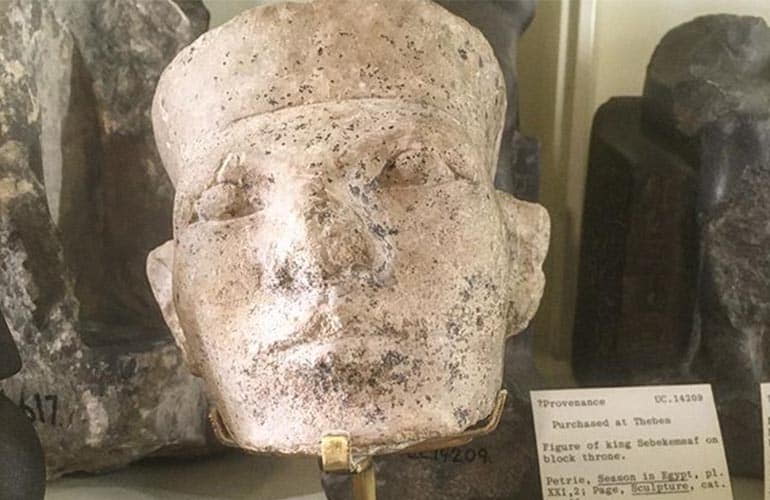
He unification of these two states by Narmer (also known as Menes), in around 3100 BC, set the scene for the greatest era of ancient Egyptian civilization. Known as the Dynastic Period, a span of some 3000 years saw more than 30 royal dynasties. Towards the end of the Dynastic Period, Egypt was ruled by a series of foreign invaders from Libya, Nubia, and Persia (among others), marking the start of a long period of foreign rule that was only to end with the revolution of 1952. The 5000 years from the time of Narmer can be divided roughly into seven periods
- Pharaonic Egypt 3100-332 BC
- Alexander & the Ptolemaic Era 332 BC-30 BC
- Roman Rule 30 BC-AD 638 b
- Arab Conquest 640-1517 Ottoman Turkish Rule 1517-1882
- British Occupation 1882-1952
- Independent Egypt 1952-present 288
Visit Egypt and Discover all the Egyptian History by our Egypt Travel Packages.

